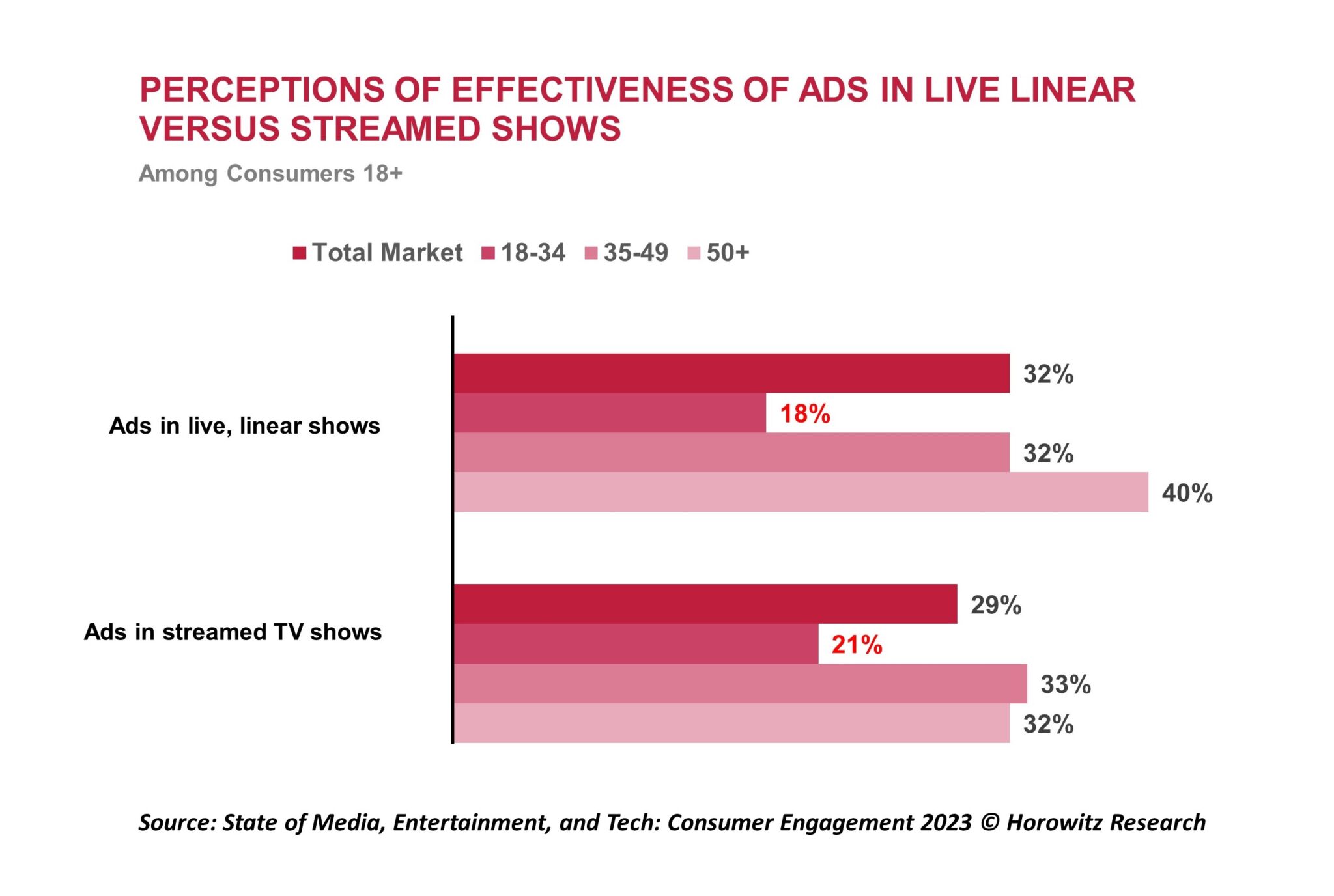
A new study from Horowitz Research finds that there is a digital divide not only in the way different generations use media. The study found that there are also differences in the effectiveness of ads between generations and that younger viewers find TV ads less effective than older viewers.
The State of Media, Entertainment, and Tech: Consumer Engagement 2023 from Horowitz Research found that email (42%), followed by ads on live TV (32%), streamed shows (29%), direct mail (28%), YouTube, and websites in general are considered the most effective advertising tactics among consumers overall but that they are also notable differences by age.

“The fact that younger consumers find ads in TV shows less effective is a reflection of their media behaviors and how the TV industry has evolved. Young people are heavy users of subscription streaming services that are generally not ad-supported, and have pretty much gravitated away from ad-supported live TV,” notes Adriana Waterston, executive vice president and insights and strategy lead at Horowitz Research. “It makes sense that they see other platforms as more effective since that is where they are seeing the most advertising. However, the past few years have seen an enormous increase in the number of ad-supported streaming services, opening up new opportunities for brands to re-connect with younger audiences through TV content.”
The study found notable differences when it comes to advertising in TV shows, whether live or streamed. Overall, about 1 in 3 consumers feel TV ads remain effective to reach them, but younger consumers, who have become accustomed to using subscription streaming services that are generally ad-free or have reduced ad loads, consider both live and streamed TV ads less effective than their older counterparts.
Only 18% of those aged 18-34 said linear TV ads were effective compared to about 40% of those over 50 and only 21% of 18-34 year-olds said streaming TV ads were effective compared to 32% of those over 50.
The study also found that younger (18-34 and 35-49 year-old) consumers more likely to find text messages, social media posts, influencer sponsorships, ads in podcasts, and ads in music streaming services much more effective than older (50+) consumers do.
On the other hand, direct mail is still considered effective by 41% of 50+ year-old consumers, compared to 20% of 35-49 year-olds and 13% of 18-34 year-olds who consider that tactic effective to reach them. Similarly, while 1 in 4 (22%) of 50+ consumers feel print is still an effective medium, only 13% of 35-49 year-olds and 7% of 18-34 year-olds feel the same.
More information is available here.







